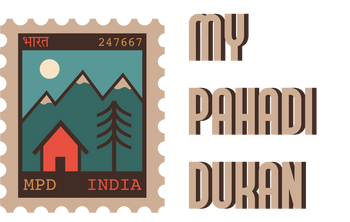Honey from Rockbee
Rock Bee is one of the important pollinators at higher altitudes of Nagaland. Most of the rock bee sites tend to be located in areas of high altitude approximately 2500m -3000m above sea level. Rockbee builds a large open nest with a single comb, on rocky cliff sides. They are a wild species and live in places away from human interference making them difficult to domesticate. Rock bees migrate over far distances and their foraging range almost 4 to 5 kms....
Rock Bee is one of the important pollinators at higher altitudes of Nagaland. Most of the rock bee sites tend to be located in areas of high altitude approximately 2500m -3000m above sea level. Rockbee builds a large open nest with a single comb, on rocky cliff sides. They are a wild species and live in places away from human interference making them difficult to domesticate. Rock bees migrate over far distances and their foraging range almost 4 to 5 kms.
High up in the mountains of Kiphire district of Nagaland, groups of indigenous men risk their lives to harvest the highly valued wild honey from hives on cliffs. Without wearing any protective clothing, the hunters climb up a ladder made of bamboo and rope carrying basket, a knife and a smoker to sedate the bees before the honey is collected. Behavioral patterns of the Rockbee indicates returning to its original nesting sites and hence it is crucial to harvest from time to time to create spaces for the bees to make their hives. Rockbee hunting is an extremely technical art form carrying strong religious significance related to various rituals, beliefs and myth associated with it. However with the arrival of Christianity most of the long established traditions have diminished. The community have long relied on oral tradition to preserve a record of the past in the absence of written historical record of Rockbee hunting tradition. Example, the ownership of rock bee sites was essentially based on the initial sighting of the site by a person or group following which a day for the hunt was decided upon and eventually the harvest was shared among themselves. Inheritance of a site, was based on clan or family affiliations and could extend beyond the boundary of the village. The tradition is carried on for now by the older folks but the art of Rockbee honey harvesting is unlikely to be pursued by the younger generation as inexperience could lead to fatality.
Rockbee honey benefits:
o It increases appetite
o It controls Gastritis
o It controls stomach ulcers
o Anxiety Relief
o Relieves seasonal allergies
o It regulates blood sugar level
o It helps to treat Urinary Tract Infection
o It resolves scalp problems and reduces dandruff
Shelf life:
Honey does not have an expiration date, but many honey jars have a "best by" date of about two years on the label to encourage consumers to use the product while it's at its best.
Note: The price of this product includes Rs. 70 shipping charge.
| Options |
120g, 320g |
|---|





